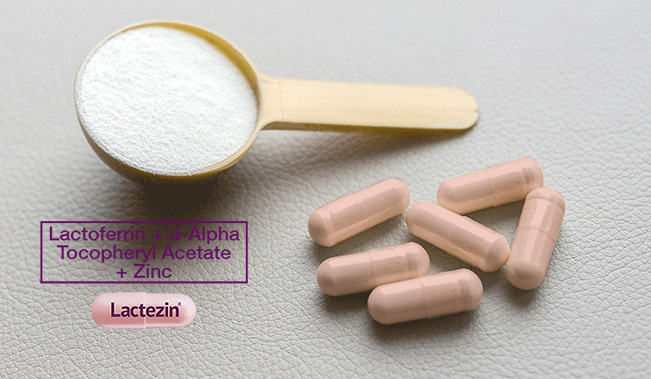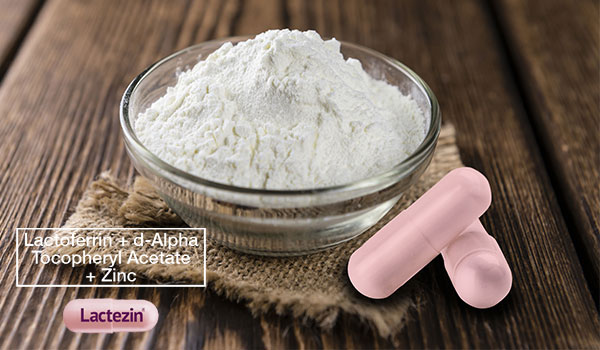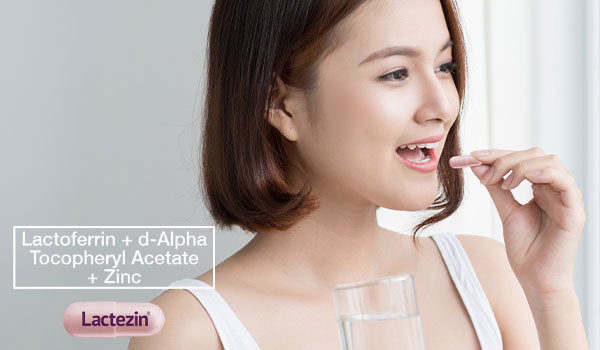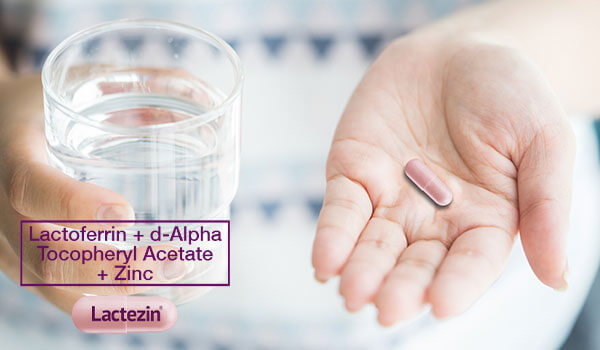Lactoferrin and Skin Immunity: What’s The Connection?

It’s not just a buzzword; immunity has become our top priority given the present health situation. But what does our skin have to do with it? A lot, as it turns out.
In this article, we talk about Skin Immunity and how a skin-boosting nutrient called Lactoferrin can benefit it.
What is Skin Immunity?
Immunity is how the body defends itself against infections. Immediately we may think of white blood cells working from inside the body to fight diseases. But the body’s immune system is exactly that: a system made up of many cells and organs working together to protect the body. This system also includes-- you guessed it-- the skin.
It’s incredible to think that something so thin (only a few millimeters thick) is actually the body’s heaviest and largest organ, making up about one seventh of our body weight. So it only makes sense that an organ that large has many roles in the body’s day-to-day functions.
Skin immunity is the ability of the skin to resist infections from pathogens, or organisms that can cause disease. The skin functions as a barrier made of several layers of cells and related glands, whose innate and adaptive immune systems are activated when the tissue is attacked by pathogens. This includes billions of T cells, which is the body’s response to microorganisms that may harm the body.
Aside from containing everything inside the body, the skin also plays a big role in providing a watertight, airtight, and flexible barrier between the outside world and the body’s highly-regulated internal systems.
Your skin also plays other key functions on the daily:
- Vitamin D production. This helps prevent many diseases including osteoporosis, cancer, heart disease, obesity, and even neurological diseases.
- Regulating body temperature. By dilating and constricting the blood vessels near the skin surface, your skin controls how heat is transferred out of the body. It also regulates body heat through sweat production.
- Indicating health concerns. The skin’s outward appearance can be very telling of their age and health condition. Changes in skin color, structure, or texture can be seen as signs of medical conditions. For example, yellowish skin may indicate hepatitis.
- Physical appearance and self-confidence. The quality and condition of our skin contributes to our perception of health, wellness, youth, and beauty. The appearance of our skin can also have a significant impact on our confidence and even our mental health.
Lactoferrin and Skin Immunity
Like the rest of the body’s organ systems, our skin needs raw materials to function optimally. This is where vitamins and nutrients come in. From building muscles to digesting food, to boosting the immune system and keeping skin healthy, these nutrients help ensure many body functions run as they should.
The skin, being the body’s largest organ, also benefits from getting the right vitamins and nutrients. Now in the case of Skin Immunity, this is where Lactoferrin comes in.
You may have encountered Lactoferrin during your skincare research; it has certainly caught the attention of online skincare enthusiasts mainly for it’s acne-fighting properties. Lactoferrin is a single-chain protein found naturally in milk from humans and cows. It is known for its iron-binding property, which is crucial in the transport of iron into and between internal organisms. And iron, as we know, helps to preserve many vital functions in the body, including general energy and focus, gastrointestinal processes, the regulation of body temperature, and the immune system.
Aside from that, Lactoferrin is also used as an antioxidant to protect the body against viral and bacterial infections. Lactoferrin helps stimulate the immune system and boost its response to sickness. On the acne-fighting front, the nutrient’s antibacterial, antioxidant and anti-inflammatory properties are a triple threat for acne. Acne-causing bacteria and inflammation are kept at bay while skin cell renewal is kept healthy and optimized.
A study has also found that when combined with Vitamin E and Zinc, Lactoferrin’s acne-fighting features are enhanced and able to reduce acne lesions, comedones and inflammatory lesions.
Sources of Lactoferrin
Thanks to its many benefits, Lactoferrin is present in many supplements today. If you are dealing with acne, a medication with Lactoferrin that you may consider taking is Lactoferrin + d-Alpha Tocopheryl Acetate + Zinc (Lactezin).
Lactoferrin + d-Alpha Tocopheryl Acetate + Zinc is an anti-acne drug that helps treat and prevent acne. This breakthrough combination of Lactoferrin, Vitamin E, and Zinc also helps in fighting pimple-bacteria, reducing sebum and inflammation and oil.
With proper and regular intake, results should be noticeable in as early as 2 weeks. Simply take two capsules daily, one in the morning and one at night, and preferably with 8-14 hours apart.
Read more features on skin care, skin types and managing different types of acne with expert tips and advice from Lactezin. Lactezin is available in drugstores nationwide, and online on Shopee and Lazada.
SOURCES:
https://www.ncbi.nlm.nih.gov/pmc/articles/PMC5767194/
https://www.ncbi.nlm.nih.gov/pmc/articles/PMC7097017/
https://www.rxlist.com/Lactoferrin/supplements.htm
https://www.verywellhealth.com/the-benefits-of-Lactoferrin-89471


